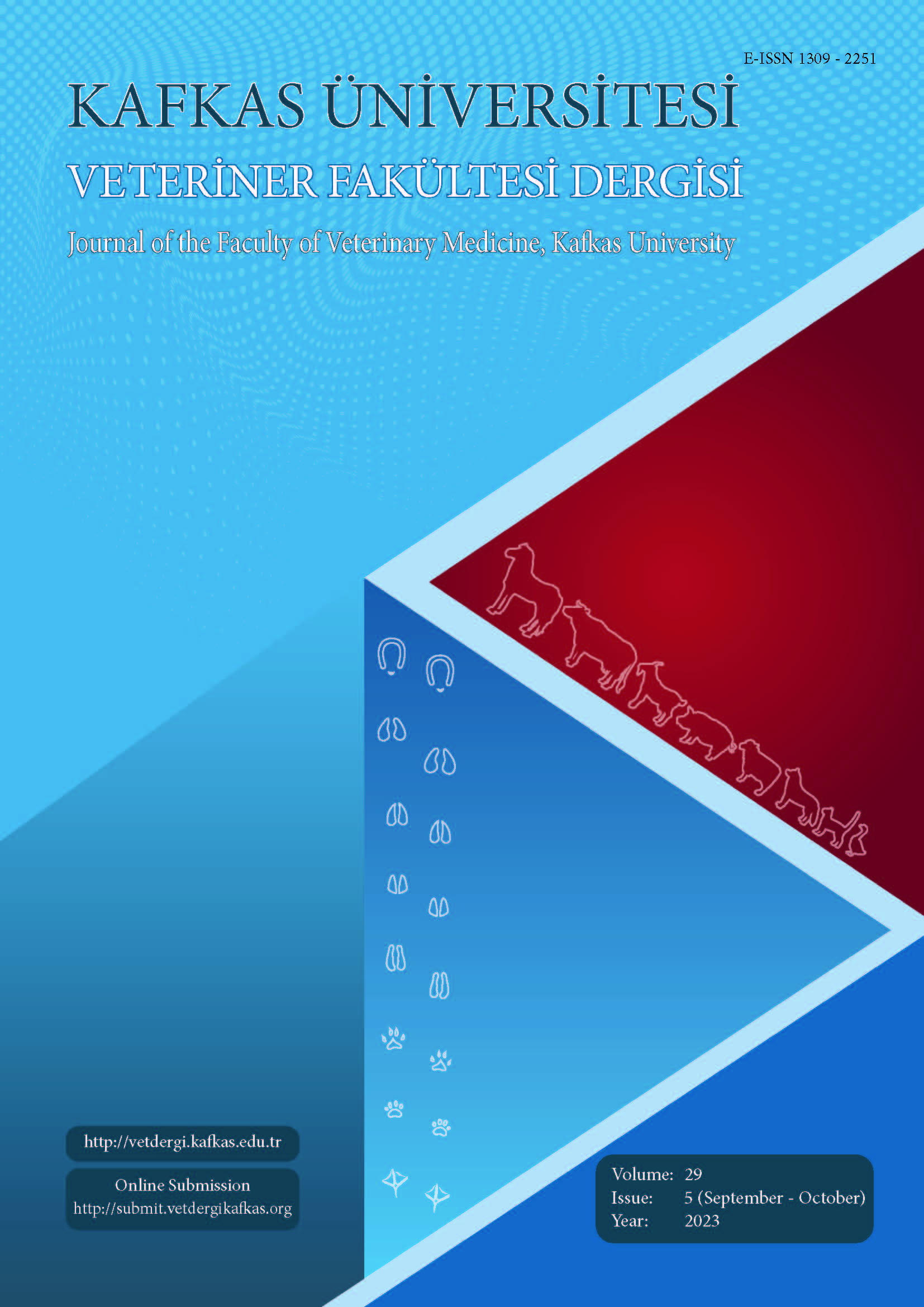
This journal is licensed under a Creative Commons Attribution-NonCommercial 4.0 International License
Kafkas Üniversitesi Veteriner Fakültesi Dergisi
2023 , Vol 29 , Issue 5
Molecular Identification of Goat"s Udder Microbes and Nutritional Value of Milk Using Dielectric Constants
1Department of Biological Sciences, Faculty of Science, P.O. Box 80203, King Abdulaziz University, Jeddah, 21589, SAUDI ARABIA2Nucleic Acids Research Department, Genetic Engineering and Biotechnology Research Institute (GEBRI), City for Scientific Research and Technological Applications, Alexandria, EGYPT DOI : 10.9775/kvfd.2023.29444 This study aims to determine which bacteria are present in goat"s udder by using gram dye, nuclear nucleic acid technology, direct 16S rRNA gene sequencing, and dielectric constants. The 16S rRNA gene is frequently sequenced in modern approaches to identifying microorganisms and molecules. Bacteria like Cohnella suwonensis, Cohnella yongneupensis, and Cohnella faecalis were isolated and Staphylococcus species like succinus, lentus, xylosus, equorum, stepanovicii, fleurettii, sciuri, kocurii, and faecalis were recorded. The constants such as dielectric constant (ε′), spectra (ε″) and dielectric loss factor (ε′+ε″) spectra, and Total Bacterial Count (TBC) from raw goat milk samples were determined employing network analyzer and plate count methods, respectively. A poor relationship was found between TBC in logarithm and permittivities at single and multiple frequencies. Linear models like multiple linear regression, ridge regression, and absolute shrinking were used to determine TBC based on effective dielectric constant and spectra and their combination; and an excellent TBC performance was determined. In conclusion, various microbes found and isolated were, Staphylococcus succinus, S. lentus, S. xylosus, S. equorum, S. stepanovicii, S. fleurettii, S. sciuri, S. kocurii, Cohnella suwonensis, C. yongneupensis, and C. faecalis. This study emphasizes the importance of improved hygienic procedures in ensuring food safety by emphasizing the importance of avoiding contamination and using the appropriate types of processing equipment. Keywords : Dairy goat, DNA, Milk hygiene, Polymerase chain reaction, 16s rRNA gene










